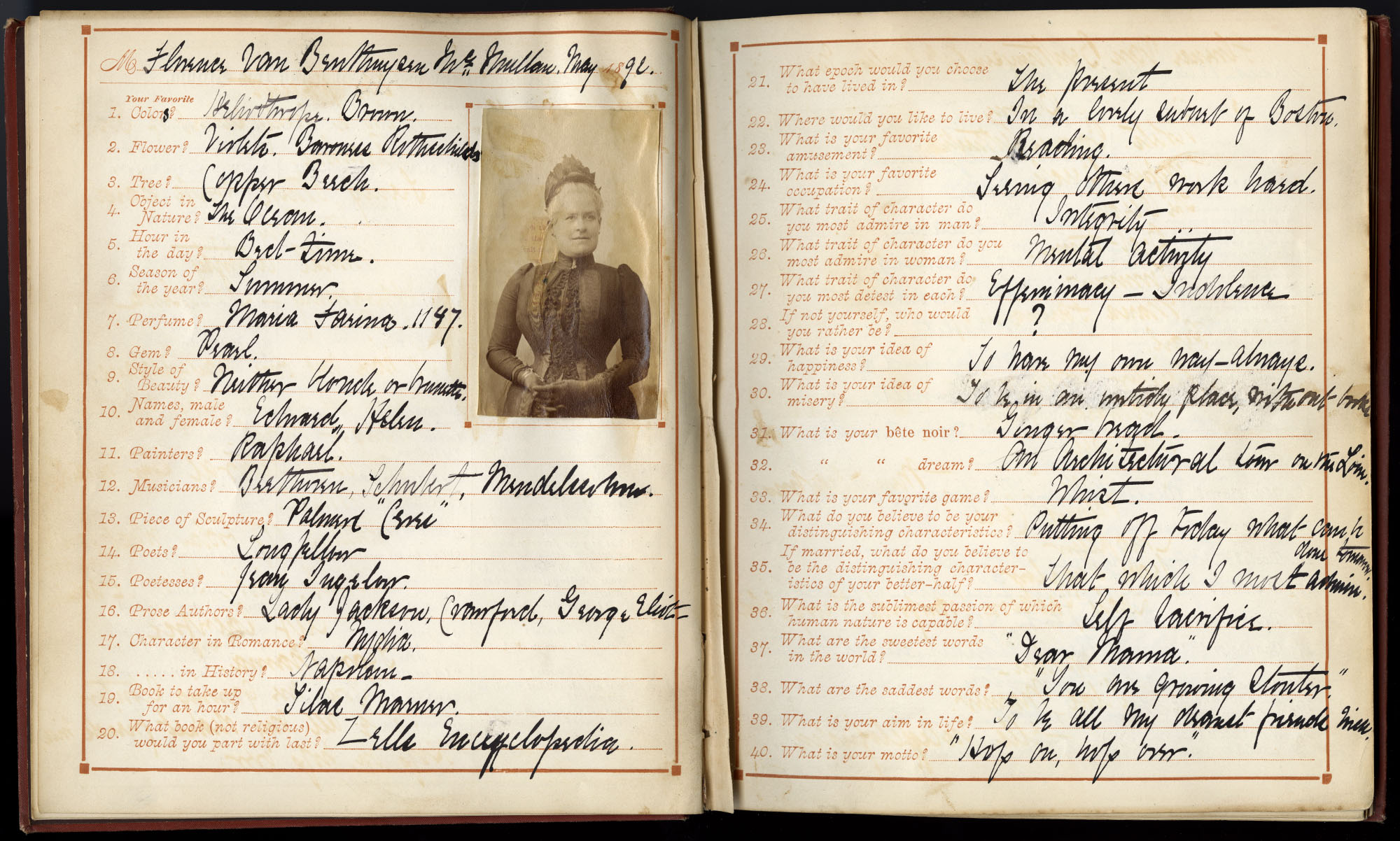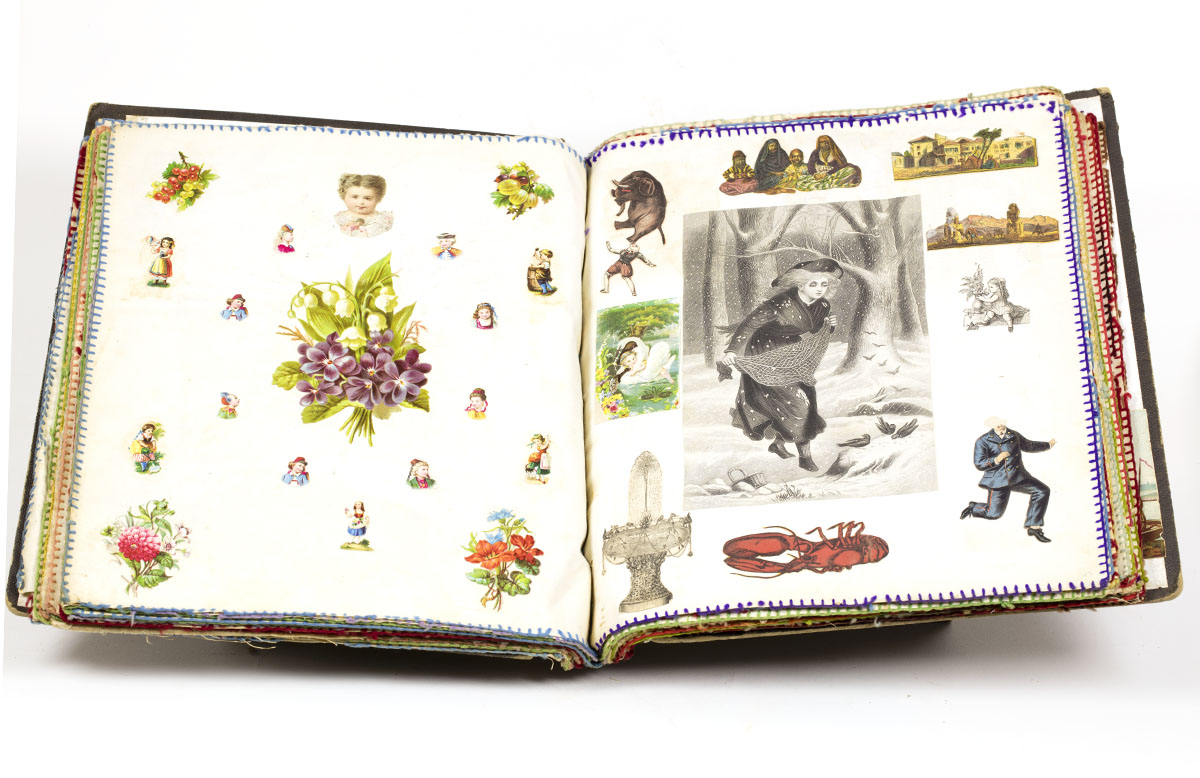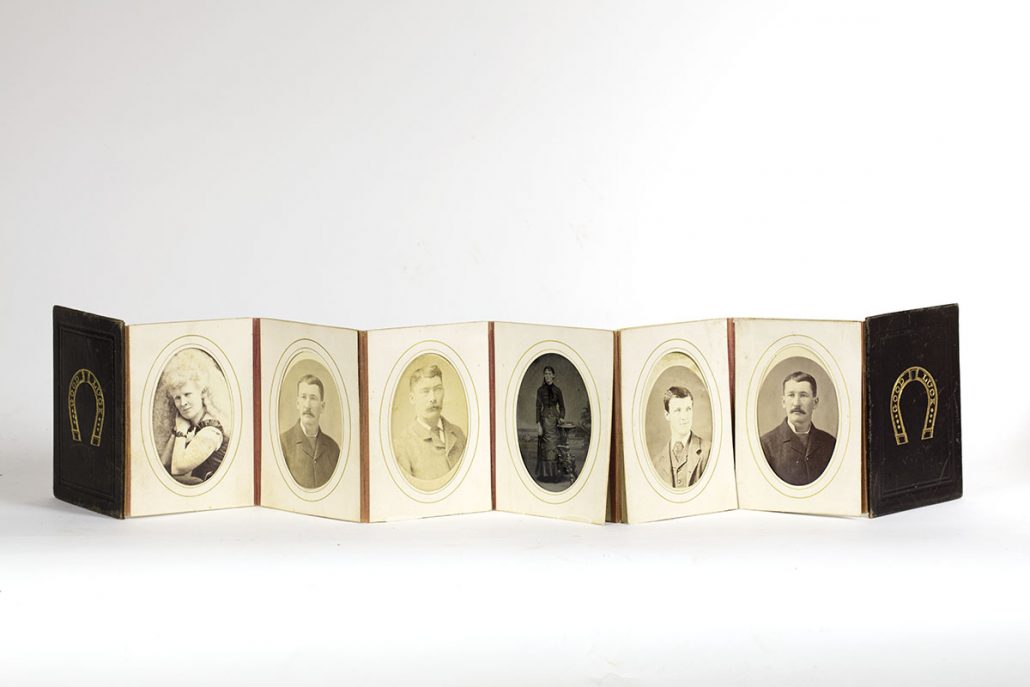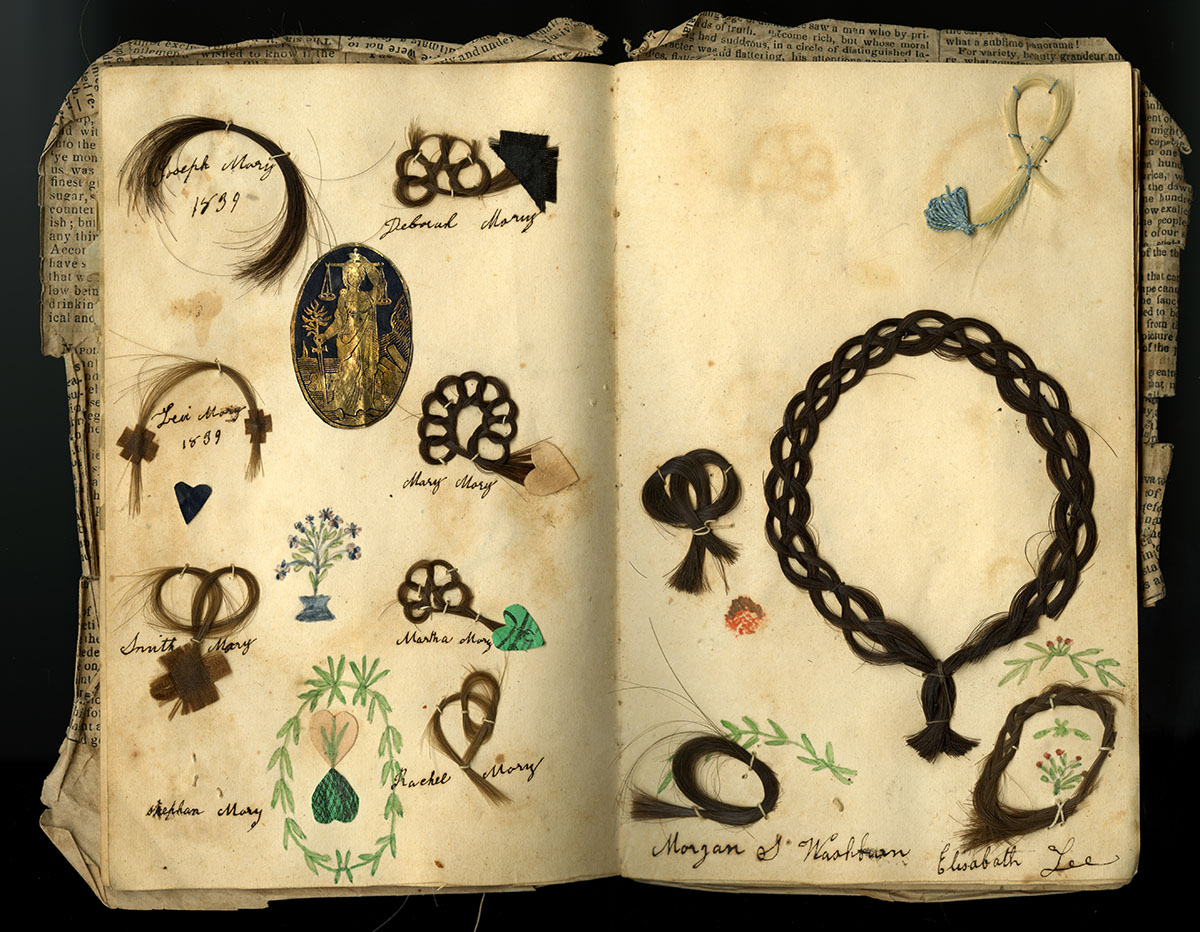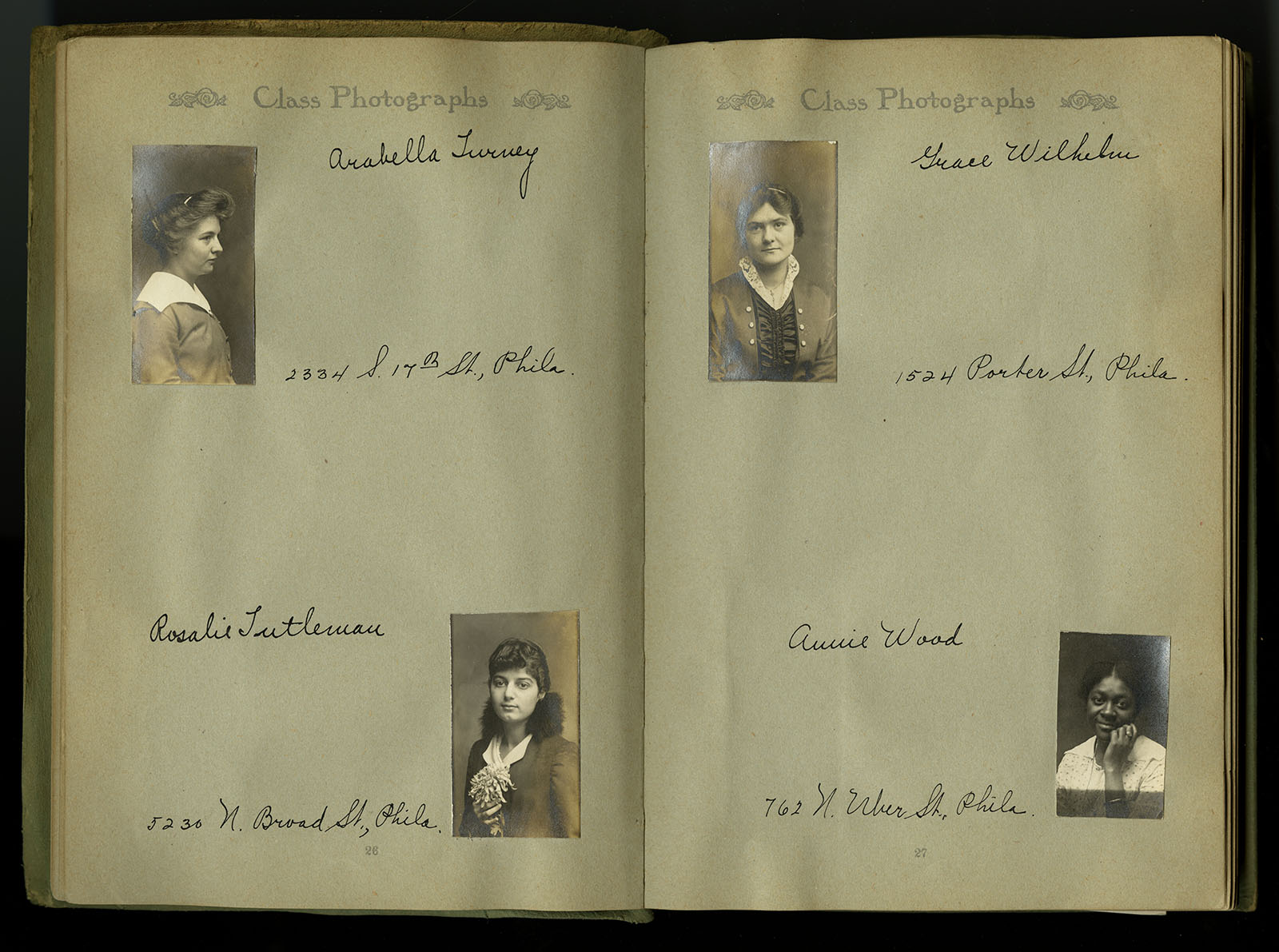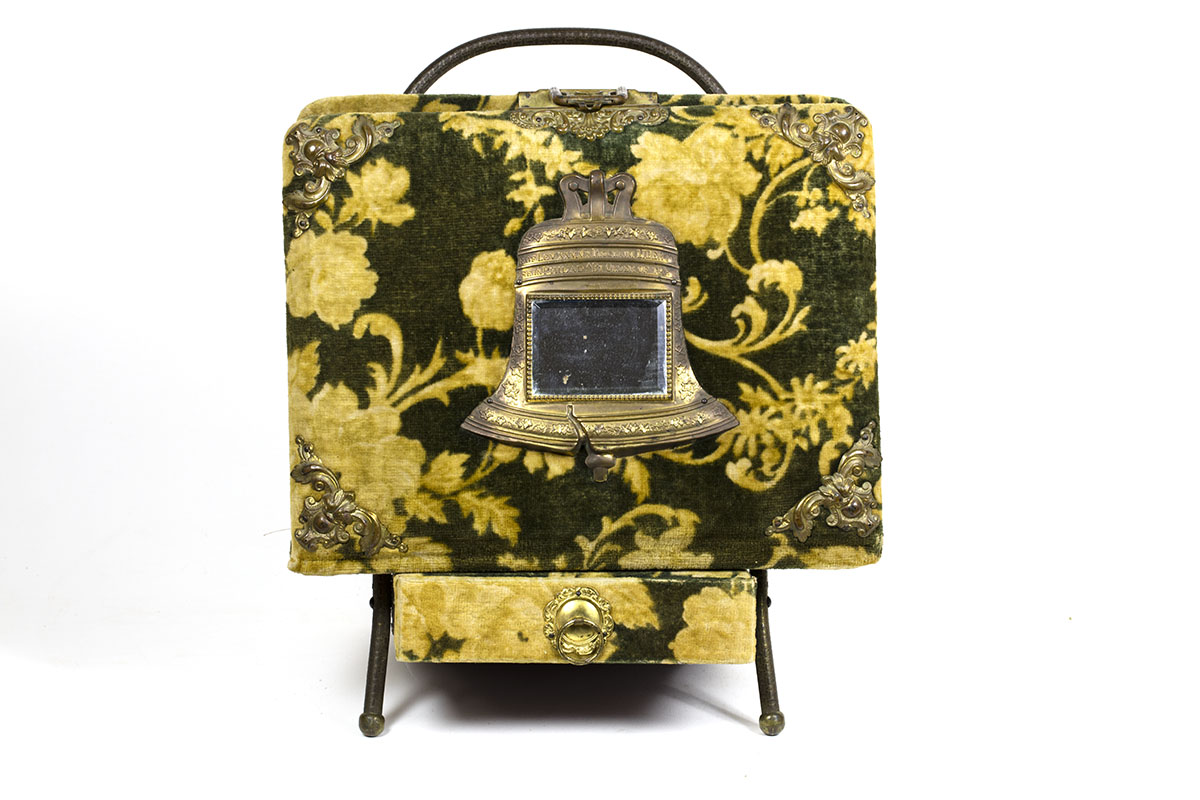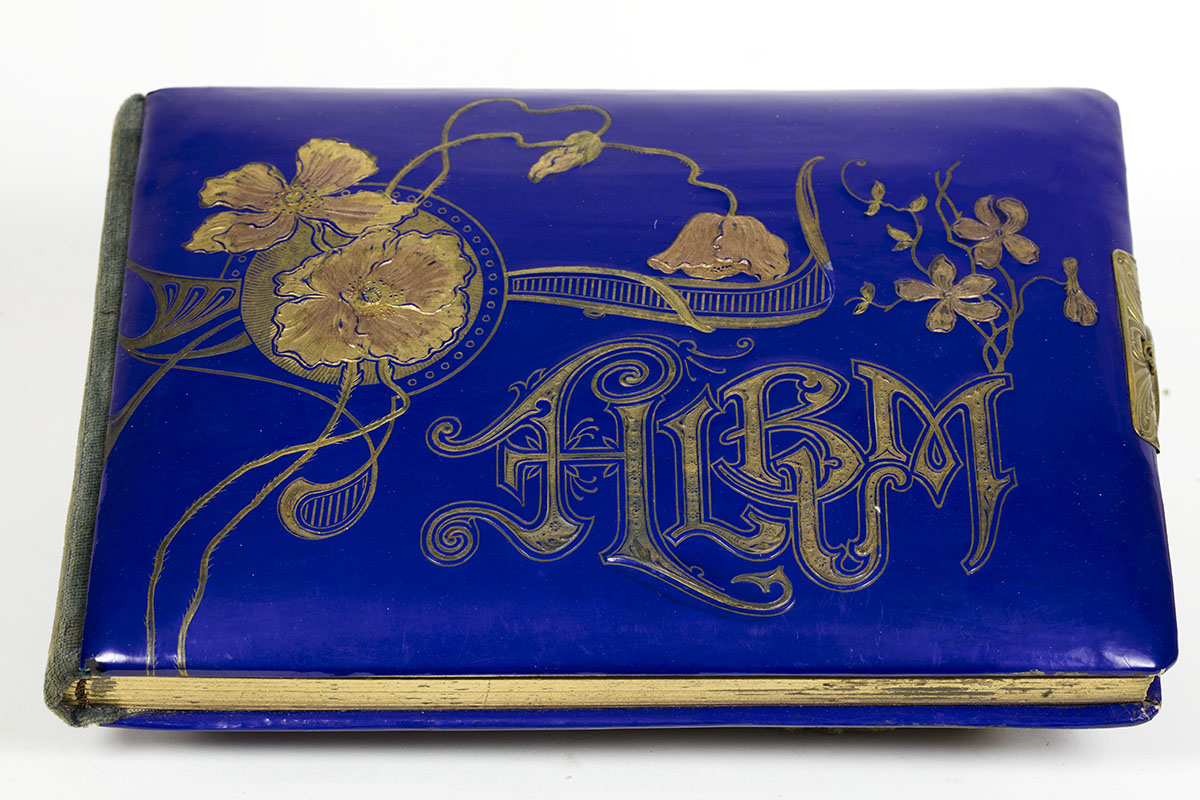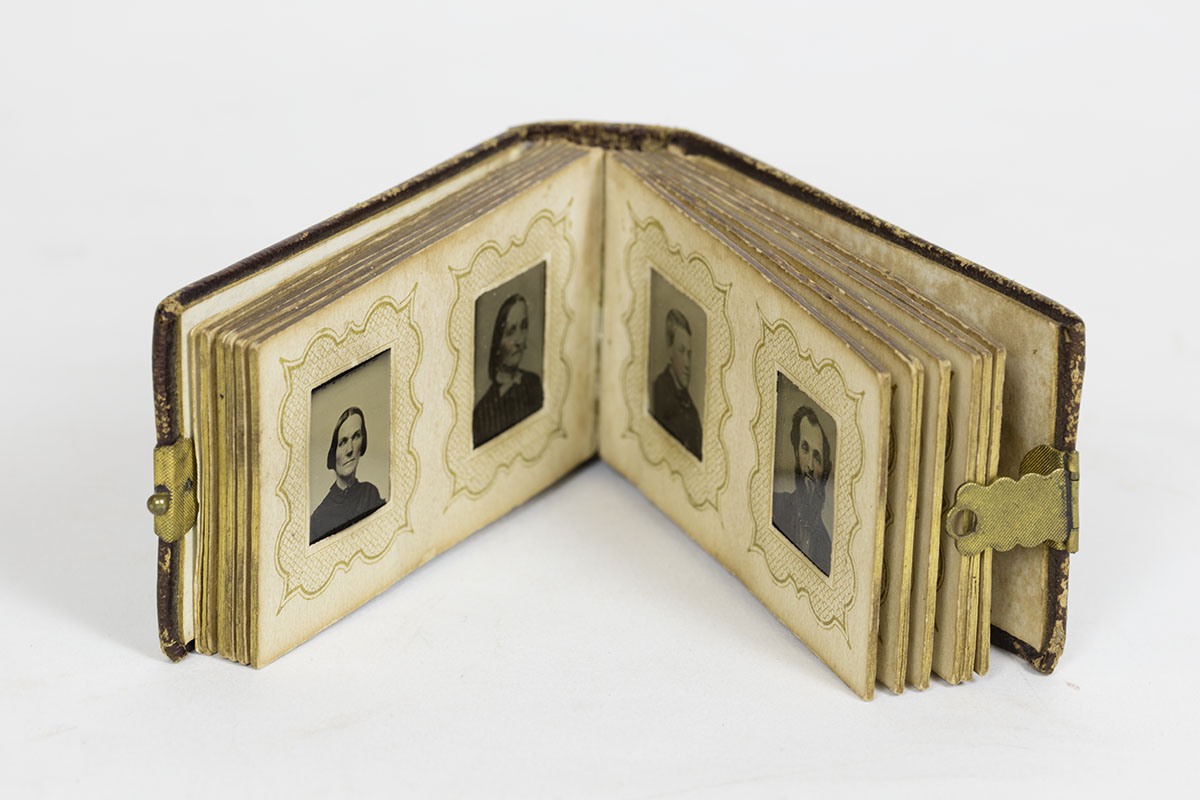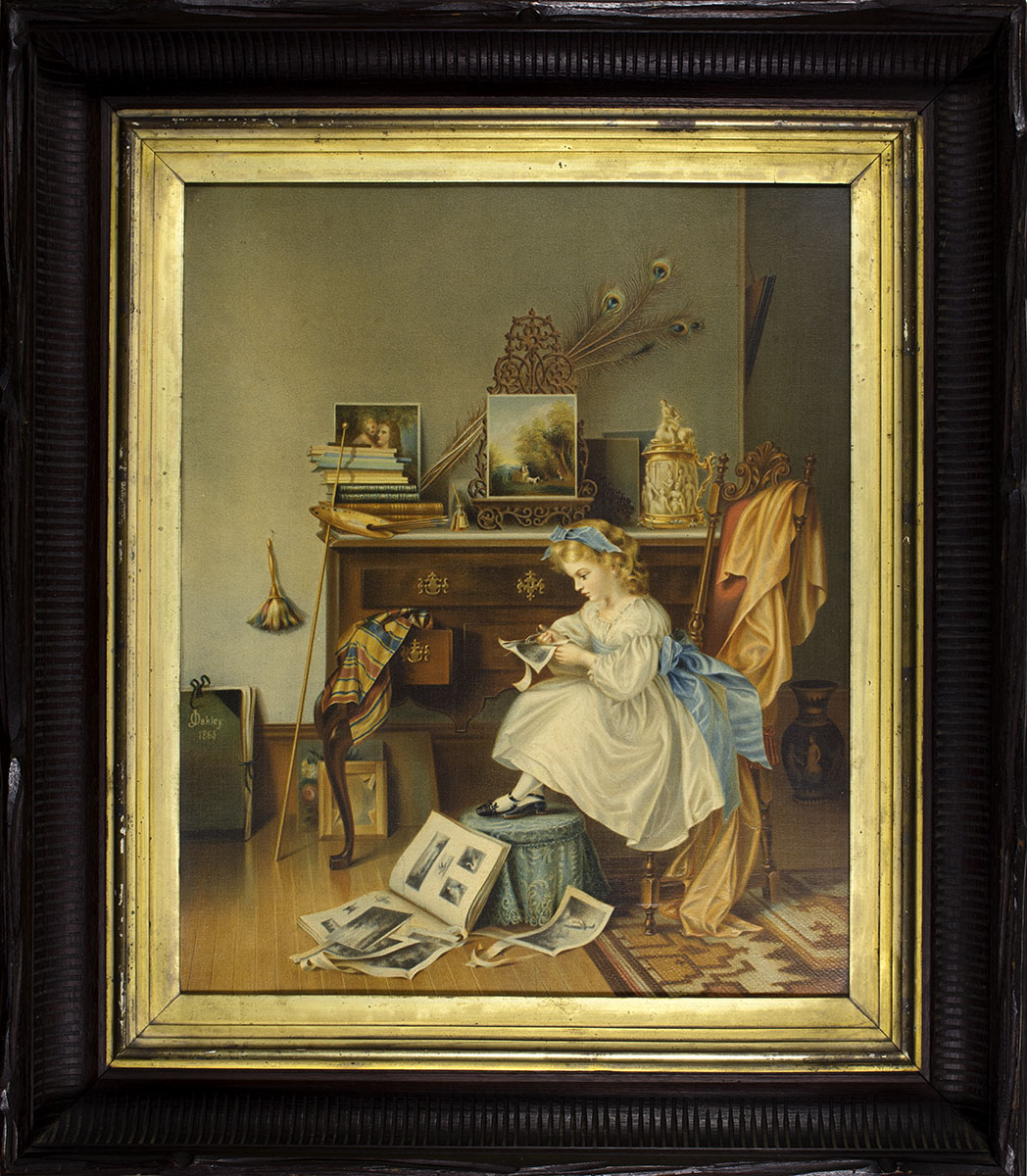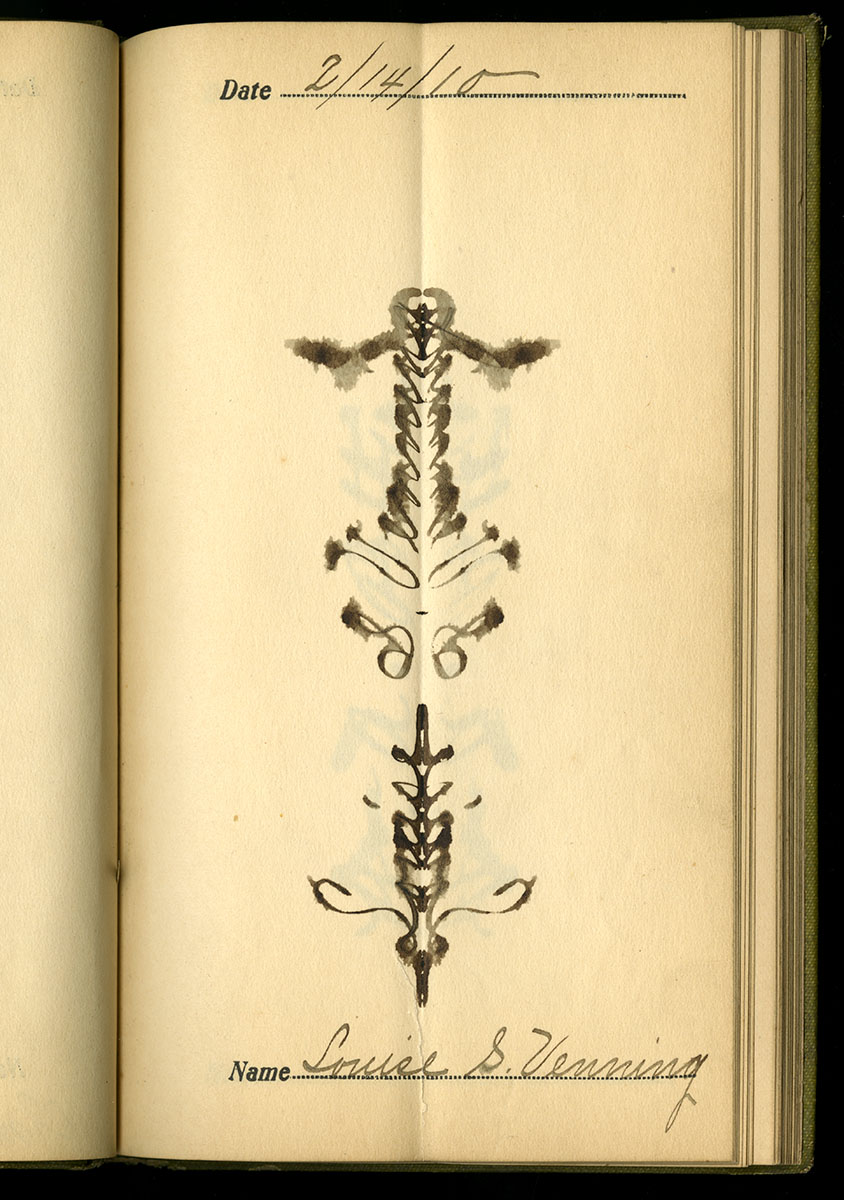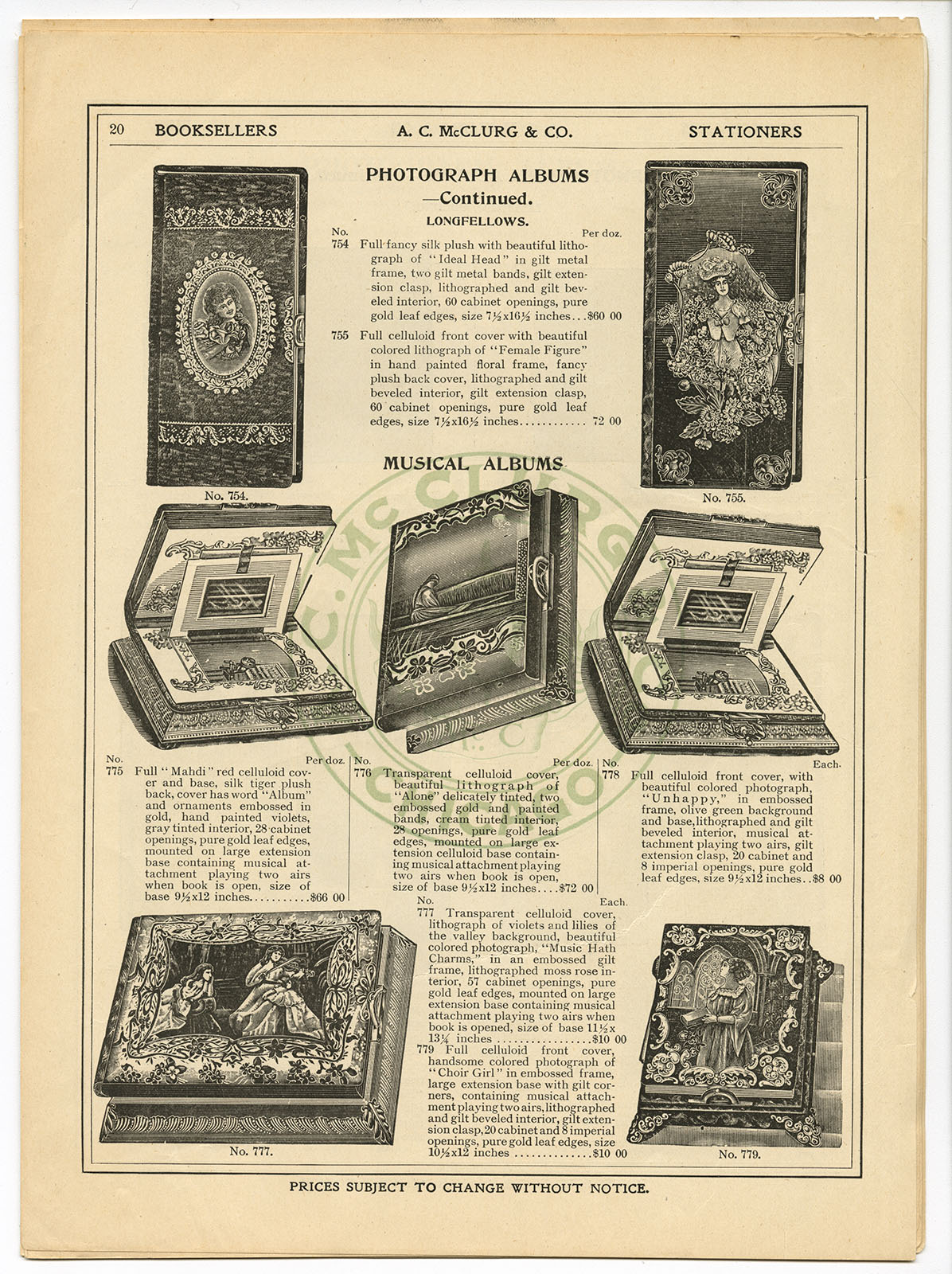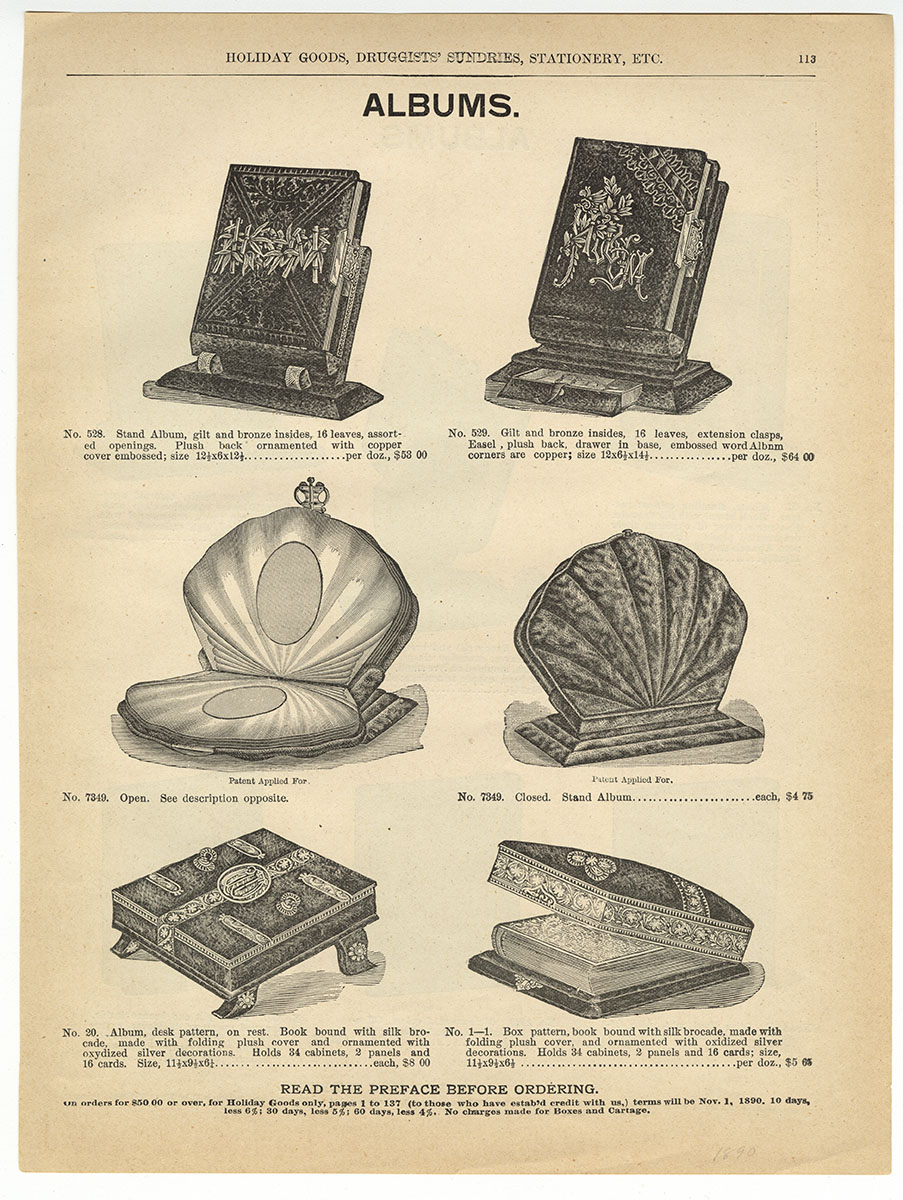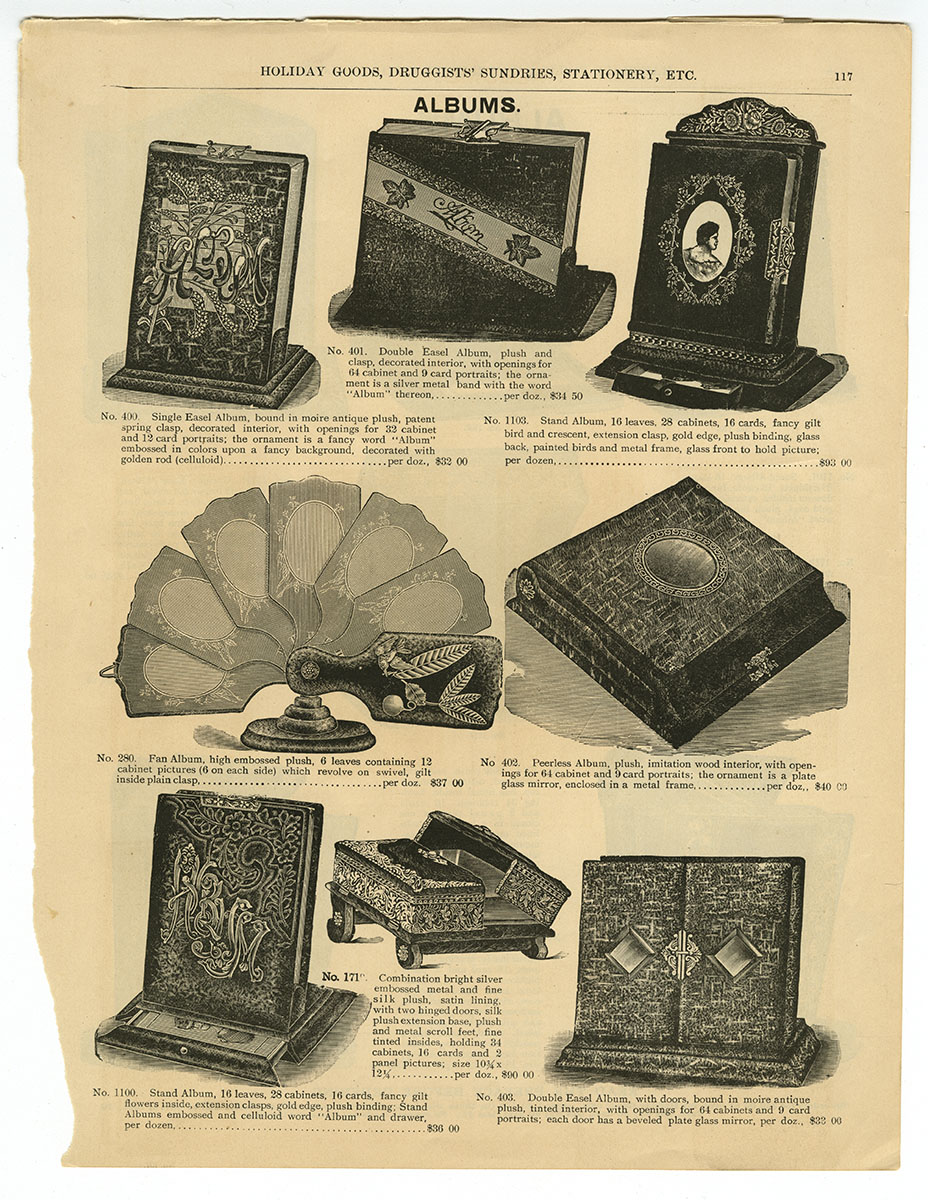Memory Lane
People like to save sentimental memorabilia, the small ephemera of our daily lives that remind us of a special moment or a loved one. Books serve this purpose well. Friendship albums, scrapbooks, yearbooks, and photo albums hold our memories between their covers. Some photograph albums from the late 19th century blurred the line between parlor decoration and book. They were meant to sit out on display and were often made out of wildly diverse and unusual materials. Some photo albums even had musical mechanisms that played when the book was open, making it a truly multi-media experience.
Mental Photographs: An Album for Tastes, Habits, and Convictions (New York, 1890). Gift of Todd and Sharon Pattison.
This book of “psychological recreation” requires that each participant fill in their answers to a series of questions. They are also asked to remove a carte-de-visite photo from its backing and paste it in the box on the page. This is a complicated task and might explain why there is only one photo in the book.
Scrapbook, ca. 1876.
This scrapbook contains periodical illustrations, paper scraps, cutouts, and trade cards. The owner embroidered each linen page with multi-colored thread.
“Good Luck” photograph album, late 19th century. Michael Zinman Binding Fund.
Accordion photograph albums, sometimes called “screens,” can be displayed standing open as shown here. It can also be handheld and each panel turned like a page in a book.
Margaret Williams’ friendship album, 1839.
Margaret Williams compiled this album by sewing locks of hair from her family and friends onto the pages. She may also have made the book and its crude newspaper wrapper is at odds with its intimate and sentimental subject matter.
The Girl Graduate Her Own Book (Chicago, 1915).
This memory book is very much like a yearbook except that the owner, Mildred Davis Zaiser, compiled it herself. She was a student at Philadelphia High School for Girls.
Photograph album with stand, ca. 1908. Michael Zinman Binding Fund.
This photograph album is both decorative and functional. The covers open downward and the photos are oriented vertically for easy viewing while on the stand. The drawer is for extra photos and other memorabilia.
Celluloid photograph album. Michael Zinman Binding Fund.
The covers on the album are made of celluloid, an early form of plastic and was widely used for photograph albums around the turn of the 20th century.
Gem tintype album. Michael Zinman Binding Fund.
This little album holds a surprising forty-eight tintypes and yet fits in the palm of the hand. Commonly known as “gem tintypes” these low-cost photographs were produced with a twelve-lensed camera and were given away to friends and family much like school photos of today.
Iphone 4S, 2015.
Twenty-first century notebook, address book, phone book, calendar, map book, newspaper, letter keeper, and photo album.
The Little Scrapbook Maker. Chromo-lithograph after an 1865 painting by Juliana Oakley (Chicago,1868). Gift of Ivan Jurin.
Your Hidden Skeleton, (Philadelphia,1910). Gift of descendants Cordelia H. Brown, Lillie V. Dickerson, Mary Hinkson Jackson, and Georgine E. Willis in honor of Phil Lapsansky.
The introduction to this book explains that this is “a novel autograph book which reveals the secret skeletons of your friends through their handwriting.” Note that each page was folded to create the skeleton.
A.C. McClurg & Co. Photograph Albums (Chicago, ca. 1901). Michael Zinman Binding Fund.
Marshall Field & Co.’s Illustrated Catalog of Holiday Goods, Druggists’ Sundries, Stationery, Etc. (Chicago, ca. 1890). Michael Zinman Binding Fund.
Marshall Field & Co.’s Illustrated Catalog of Holiday Goods, Druggists’ Sundries, Stationery, etc. (Chicago, ca. 1891). Michael Zinman Binding Fund.


